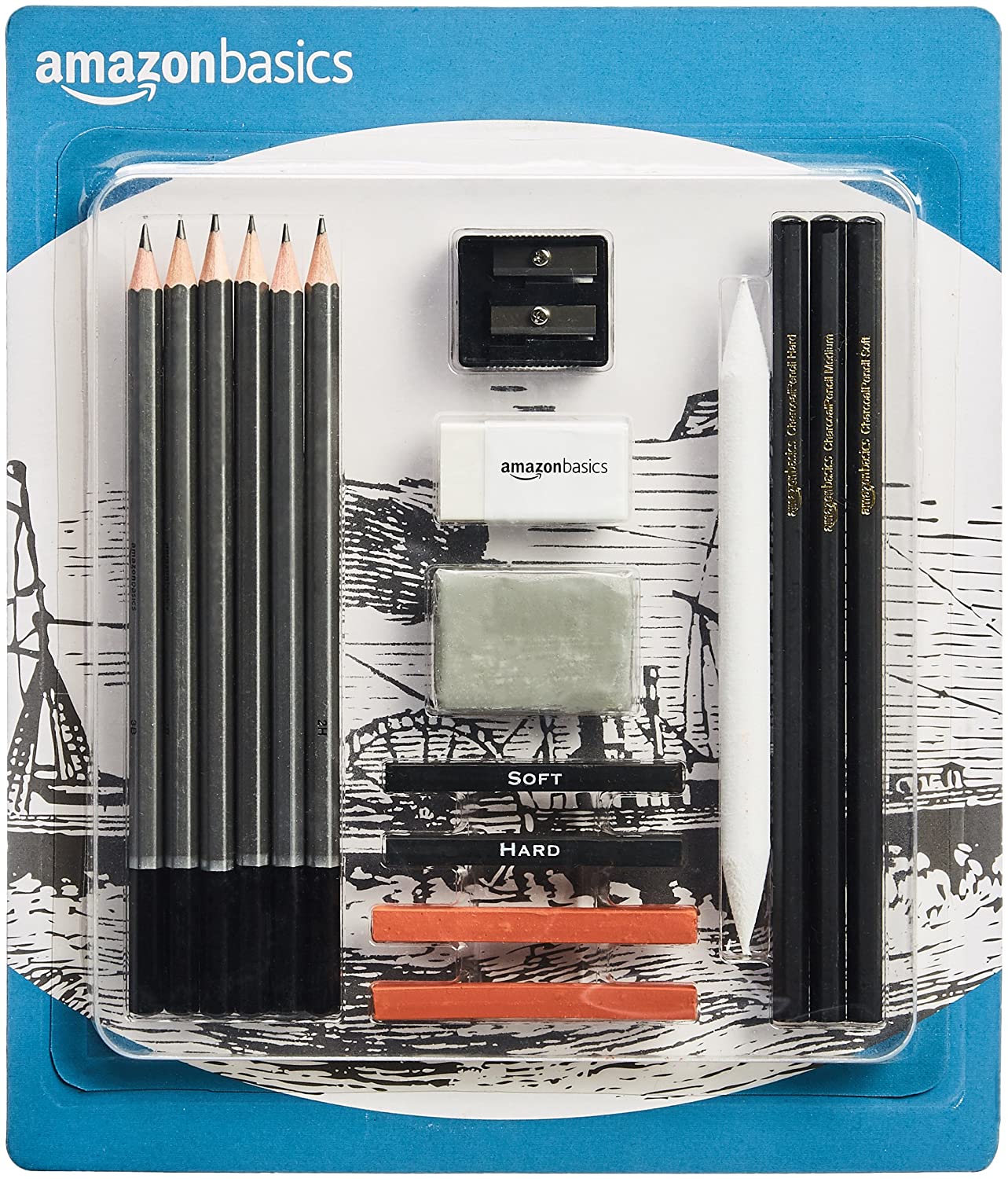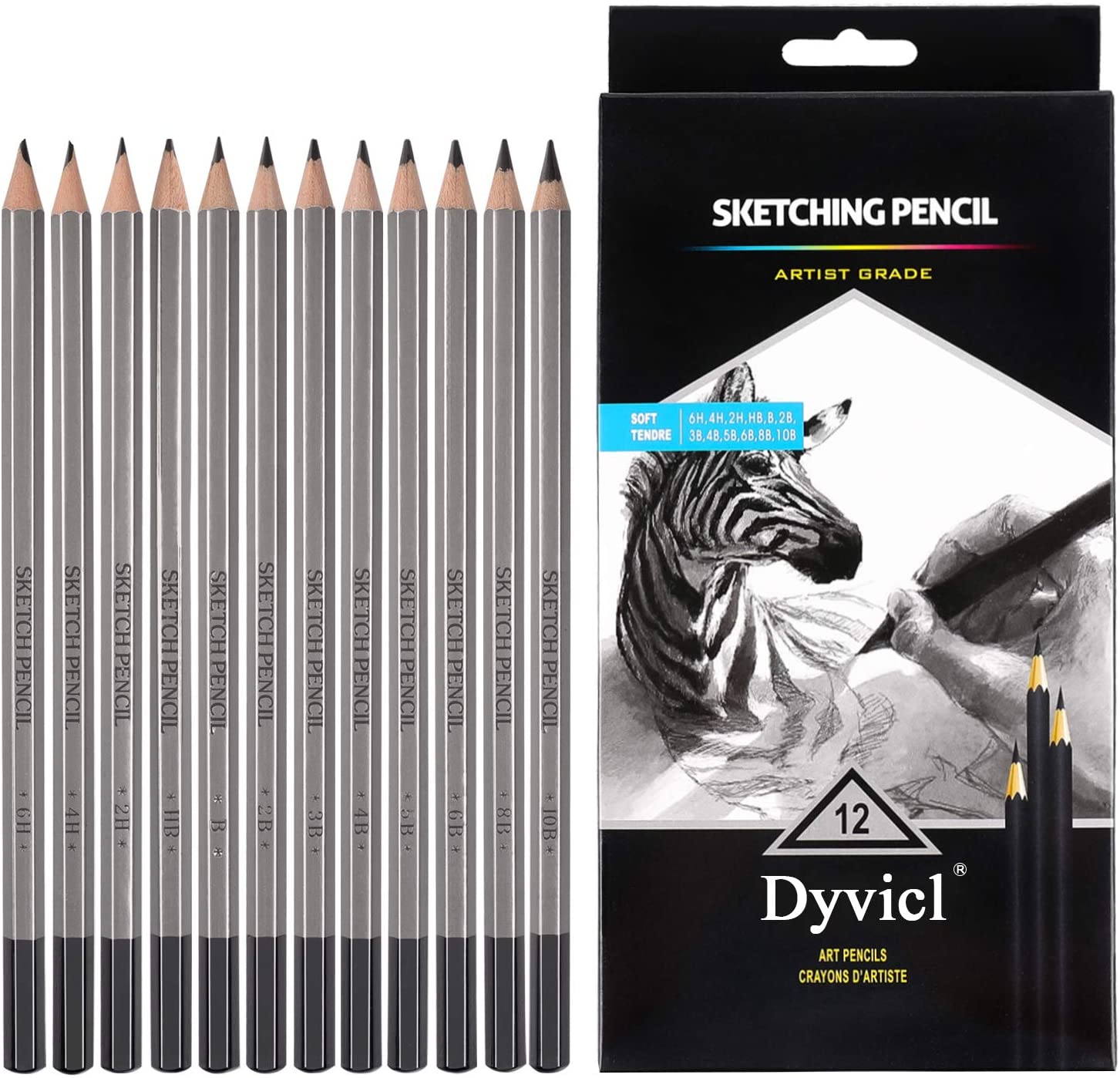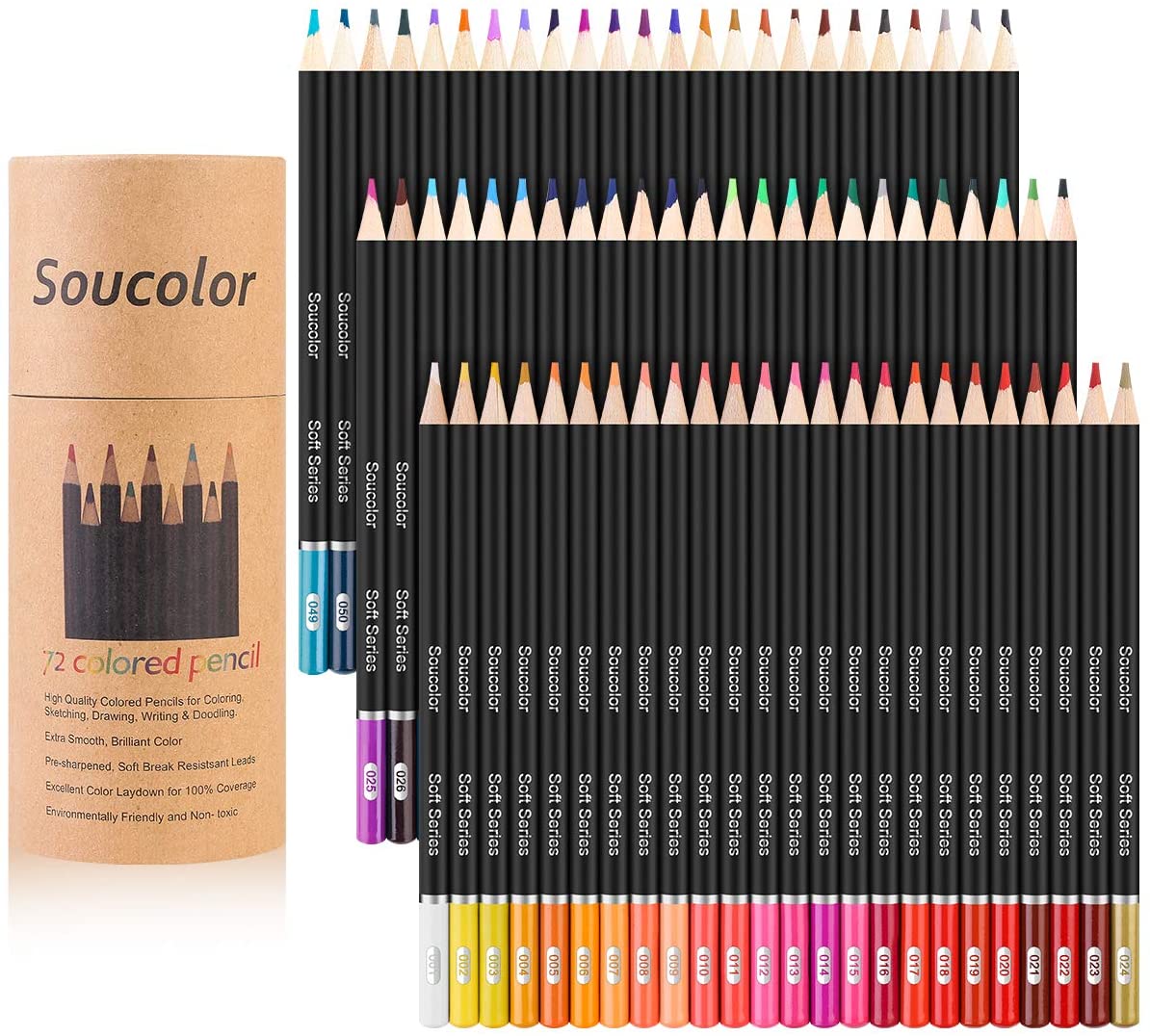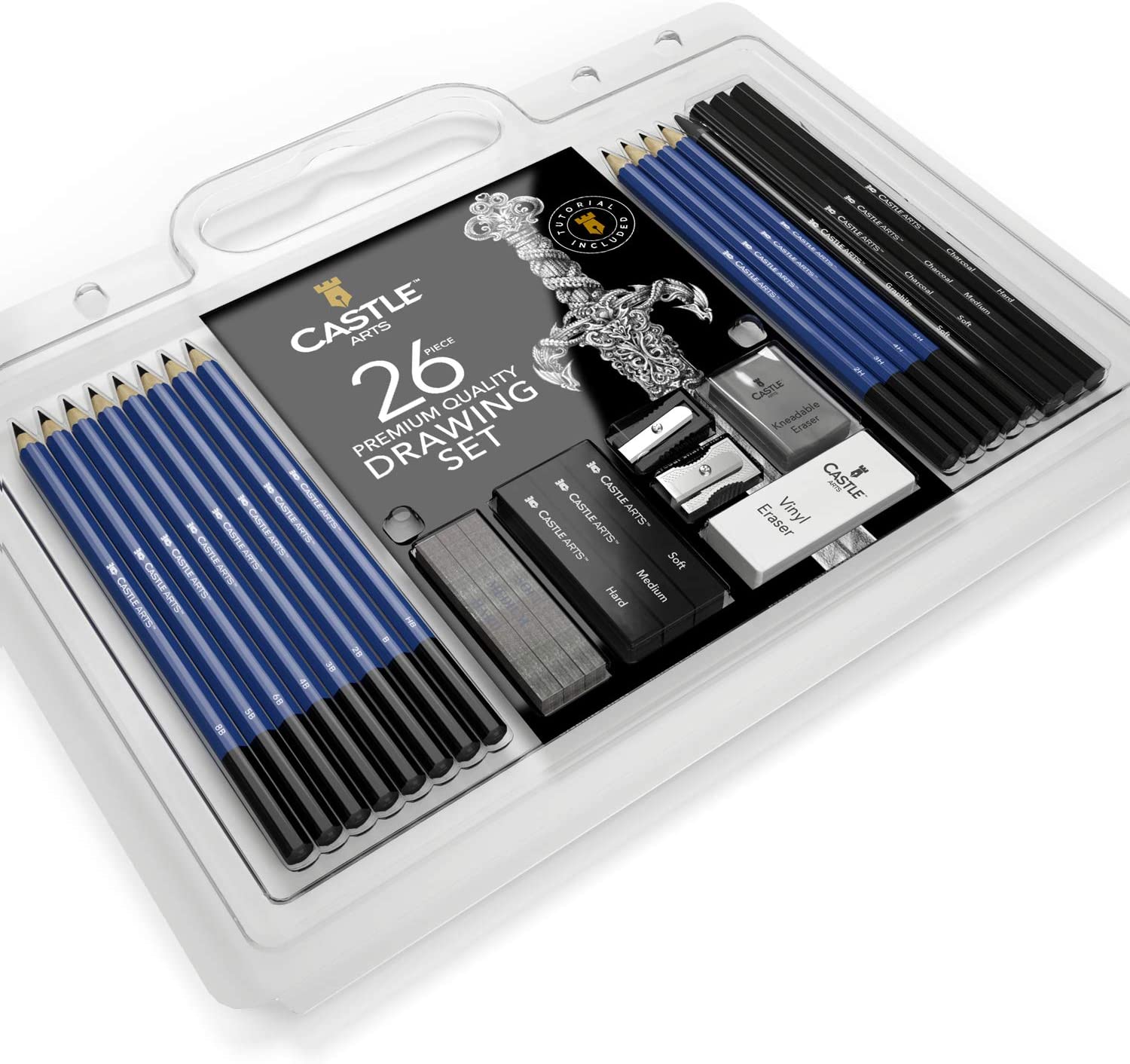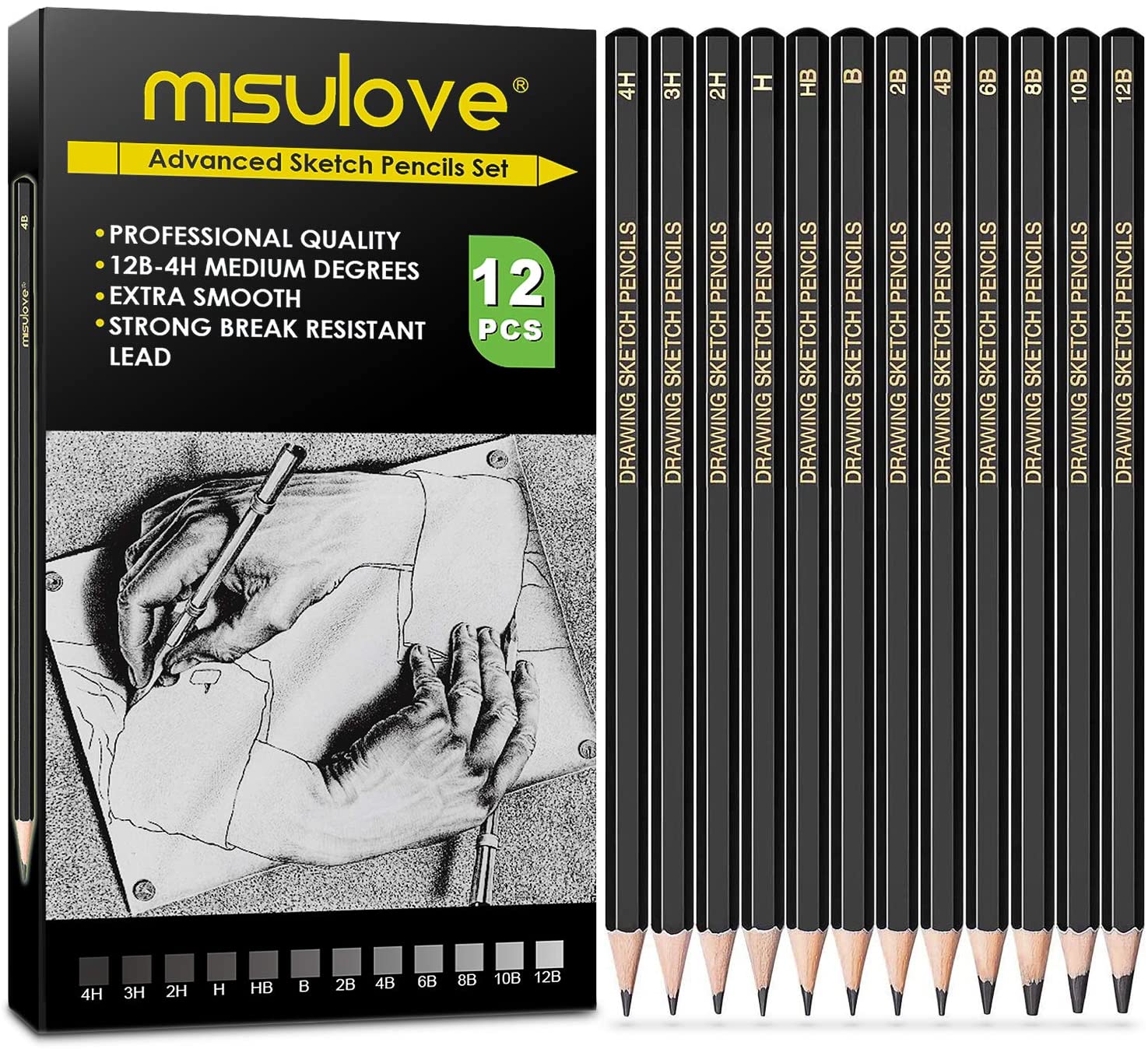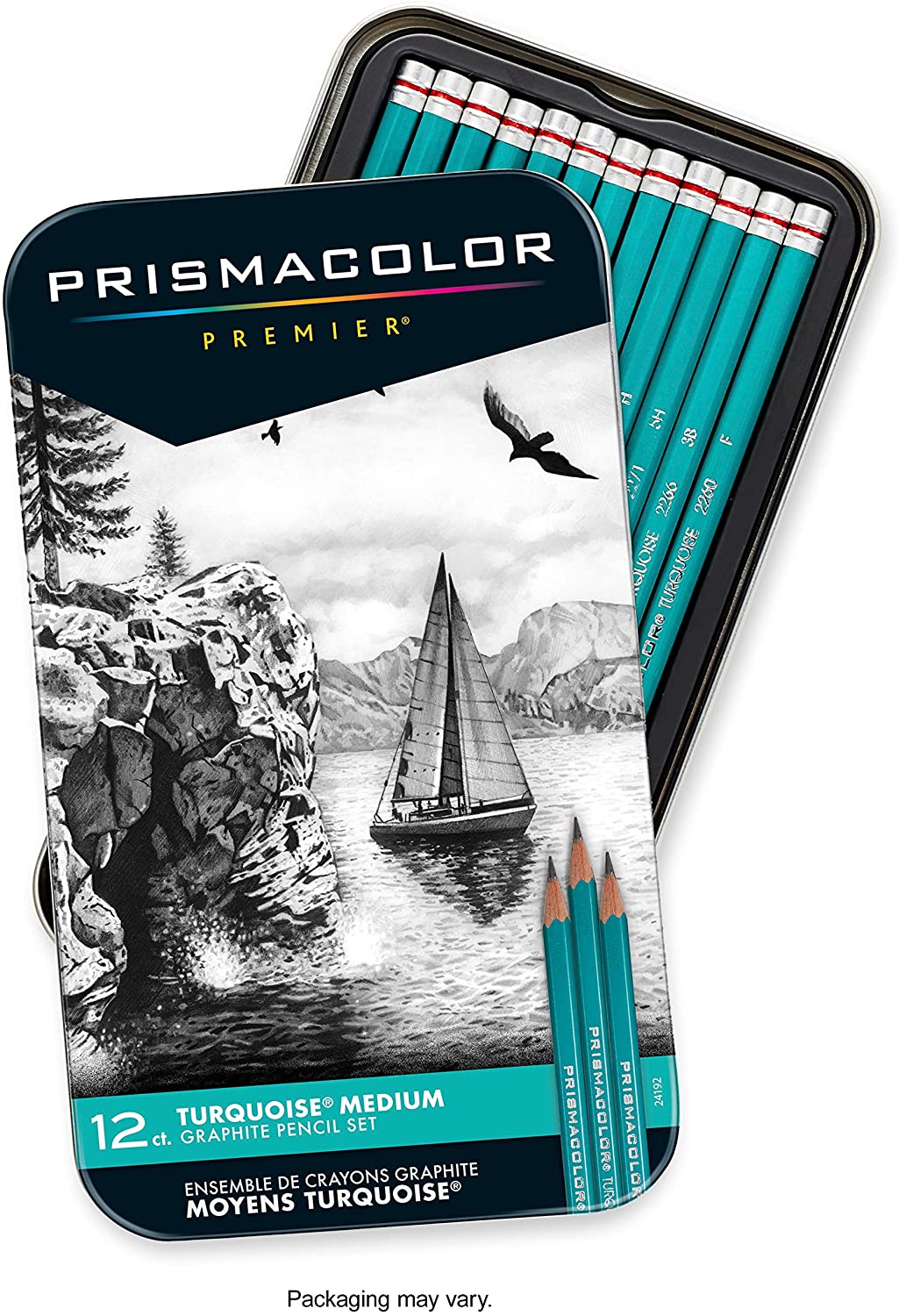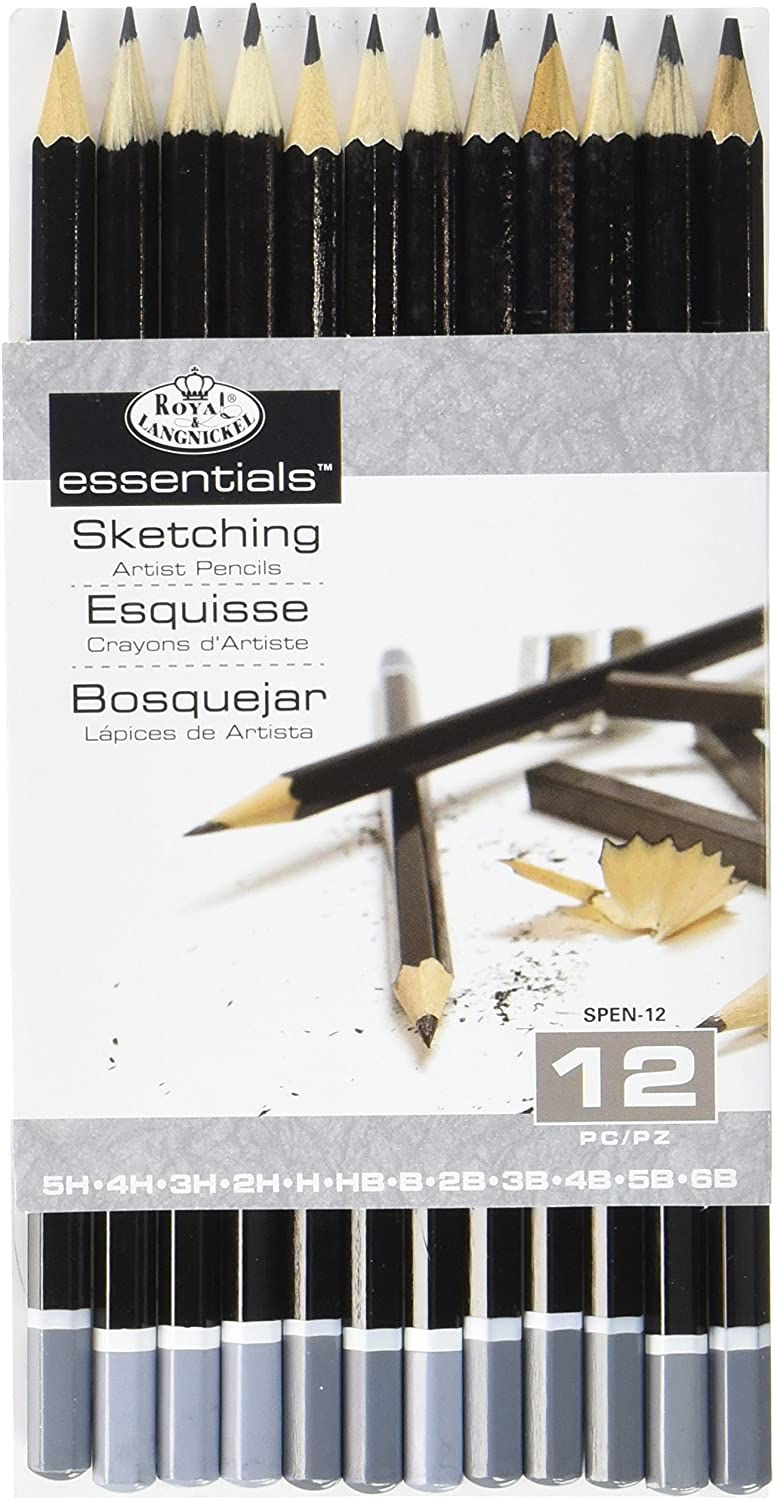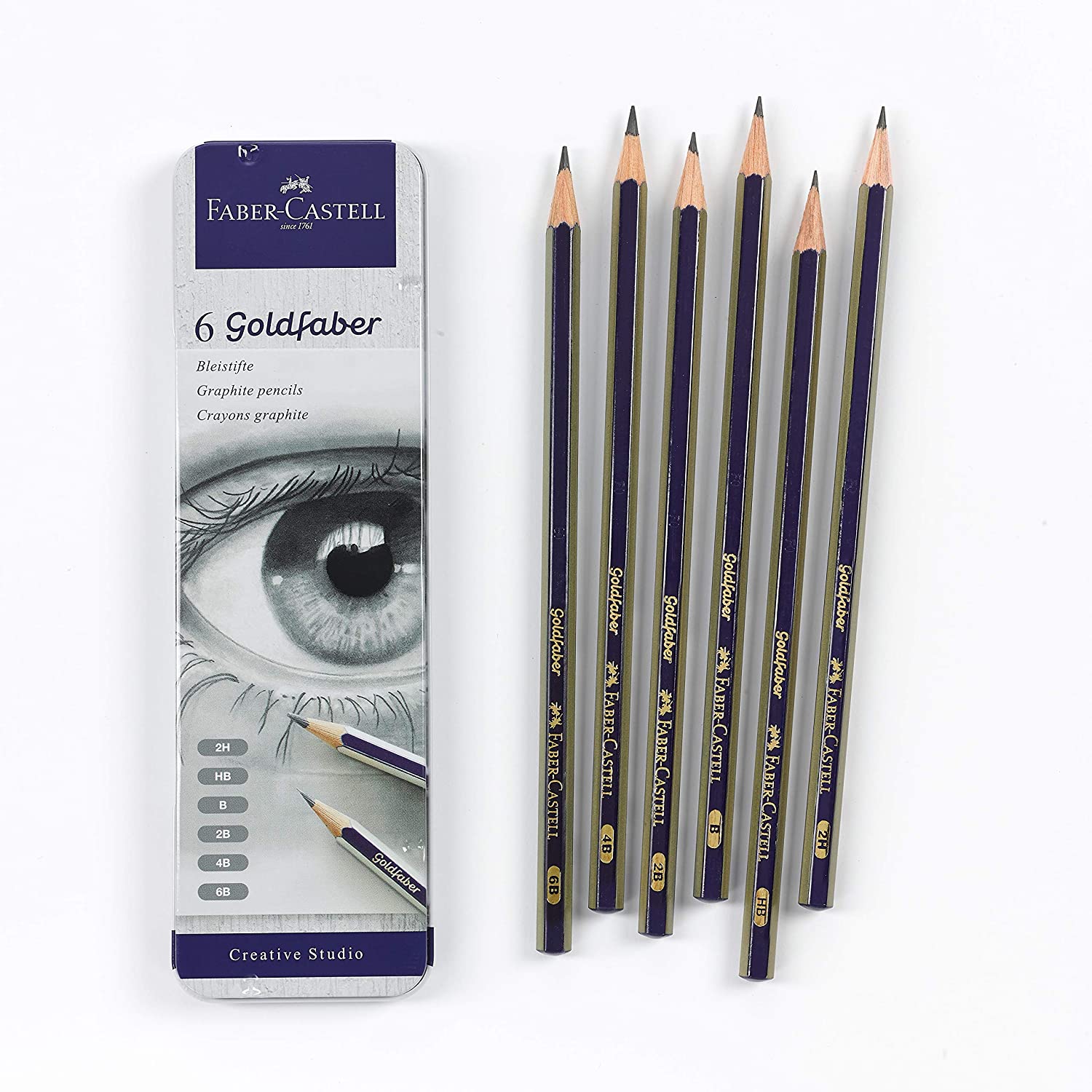Amazon Basics 17-Piece Sketching Pencil Set
Last updated: October 28, 2021
This 17-piece kit has everything you need: six pencils, three charcoal pencils, four compressed sketch sticks, one standard eraser, one kneaded eraser, one blender/smudge stick and one dual-barrel sharpener. The set is high-quality for all skill levels but is especially great for beginners.
We looked at the top Sketching Pencil and dug through the reviews from some of the most popular review sites. Through this analysis, we've determined the best Sketching Pencil you should buy.
Product Details
Key Takeaway: This all-in-one kit is great for all skill levels but is especially great for beginners who need quality materials.
In our analysis, the Amazon Basics Amazon Basics 17-Piece Sketching Pencil Set placed 8th when we looked at the top 8 products in the category. For the full ranking, see below.
From The Manufacturer
All-in-one drawing and sketch kit for artists of all skill levels. Includes a variety of pencils, sketch and charcoal sticks, erasers and sharpeners. Create dynamic works of art or simply sketch out ideas. Ideal who want to experiment with or combine different drawing techniques. High grade quality at a great price. Conforms to ASTM D4236.
